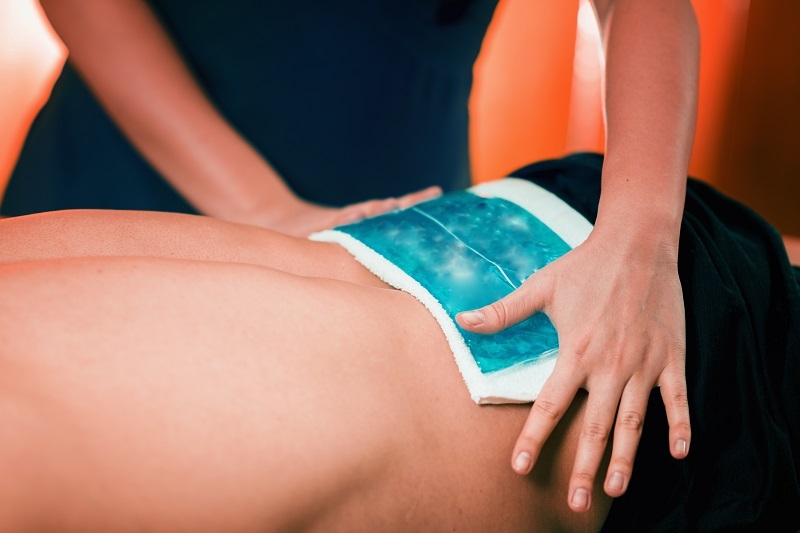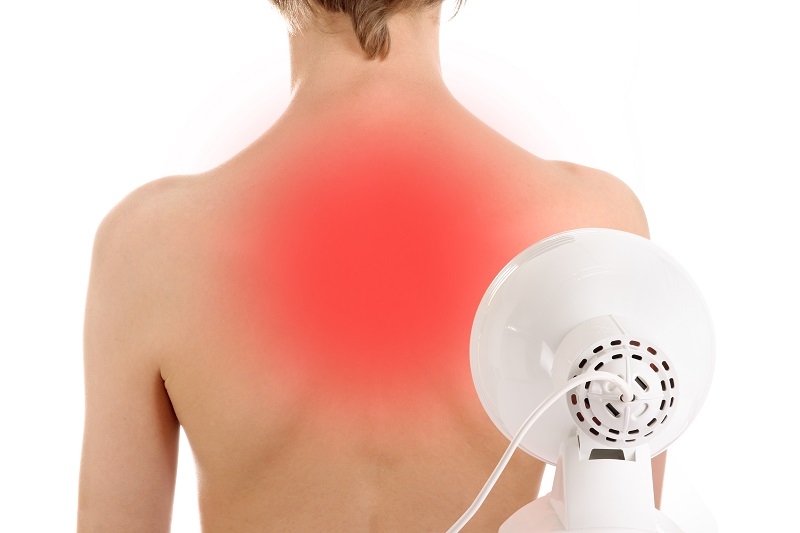Learn About Cold vs Heat Therapy for Back Pain in 2025

Backache is one of the prevalent health complications in the modern world. Most people have experienced that twinge in the lower back, either due to sitting at the desk too long, lifting something heavy, or simply having slept in the wrong position. Fortunately, some easy and low-priced options help to ease it at home. Cold and heat therapy is one of the most preferred ways of treating backaches. Why is one better than the other? This blog will go through the cold therapy and heat therapy, when to use them, and how to select the best therapy to use in the management of back pain in 2025.
Understanding the Basics of Cold and Heat Therapy
Cold and heat therapy should bring relief from back pain, but vary in the mechanisms involved. In the case of back pain, all the types have their advantages and may differ in the cause and nature of the pain.
What is Cold Therapy for Back Pain?
The ice or cold packs are a method of cold therapy used to diminish the swelling, inflammation, and pain. It acts by constricting blood vessels, thus reducing the rate of blood flow to the affected region. This assists in the reduction of swelling and also numbs sore tissues. The means of therapy for the common cold are as follows:
- Ice packs
- Cold gel packs
- Frozen vegetables wrapped in a towel
- Cold sprays or patches
Cold therapy is especially helpful in the first 24–72 hours after an injury.
What is Heat Therapy for Back Pain?
Heat therapy, also known as thermotherapy, works by increasing blood flow to the area, which helps muscles relax and promotes healing. It can ease stiffness and soreness by making the tissues more flexible. Common heat therapy methods include:
- Hot packs for back pain
- Heating pads
- Warm towels
- Warm baths or hot showers
- Infrared heat belts
Heat therapy is often used for chronic back pain or muscle tightness.
When Should You Use Cold Therapy?
Cold therapy is best for acute injuries—those that happened recently. If you’ve just pulled a muscle or strained your back, using something cold can stop swelling and reduce pain.
Cold Therapy Works Best for:
- Recent back injuries (within 48 hours)
- Sudden pain due to overuse or lifting something heavy
- Red or swollen areas
- Sports-related injuries
How to Apply Cold Therapy
- Wrap a cold pack or frozen item in a thin towel.
- Apply to the sore area for 15–20 minutes.
- Repeat every 2–3 hours for the first couple of days.
Cold Therapy Tips
- Never place ice directly on the skin—it can cause frostbite.
- Limit each cold therapy session to 20 minutes.
- If you feel numbness or pain during application, stop immediately.
Cold therapy is great when you need fast relief from pain and swelling after an injury. It helps “calm things down” before moving on to other forms of care.
When Should You Use Heat Therapy?
Heat therapy is ideal for long-term (chronic) back pain or tight muscles. If you often wake up with stiffness or have pain that builds up slowly, heat can offer great comfort.
Heat Therapy Works Best for:
- Chronic back pain
- Muscle tightness and stiffness
- Stress-related muscle aches
- Arthritis-related discomfort
How to Apply Heat Therapy
- Use a hot pack for back pain or an electric heating pad.
- Apply it to the painful area for 20–30 minutes.
- Use 2–3 times daily for ongoing relief.
Heat Therapy Tips
- Always keep a layer (like a towel) between your skin and the heating pad.
- Avoid falling asleep while using heat therapy.
- If you feel any burning or irritation, stop right away.
Heat therapy helps increase flexibility, reduce stiffness, and prepare muscles for movement or exercise.
Combining Cold and Heat Therapy for Back Pain
In many cases, using both cold and heat therapy for back pain can be the most effective strategy. Cold therapy helps in the early stages of injury, and heat therapy helps later with muscle healing and relaxation.
A Smart Routine:
- Day 1 to 3 (Acute Pain Stage): Use cold therapy to reduce swelling.
- Day 4 and Beyond (Recovery Stage): Switch to heat therapy to improve mobility and ease tightness.
- After Exercise or Movement: Use cold therapy again if you feel sore or inflamed.
This combination method allows you to treat both inflammation and stiffness in one complete back pain treatment routine.

Best Therapy for Back Pain: What to Choose in 2025?
Choosing the best therapy for back pain depends on your specific situation. Ask yourself these questions:
1. Is the Pain New or Old?
- New pain or injury? Go with cold therapy first.
- Ongoing or long-lasting pain? Use heat therapy.
2. Is the Area Swollen or Tight?
- Swelling? Cold packs work better.
- Tightness or stiffness? Heat therapy is more helpful.
3. Do You Have an Active Lifestyle?
- Use cold therapy after intense workouts or heavy lifting.
- Use heat therapy before stretching or exercise to warm up the muscles.
In 2025, many modern hot and cold packs are designed for convenience. You can buy reusable packs that work in the microwave or freezer.
Back Pain Treatment Tips Beyond Hot and Cold Therapy
While cold and heat therapy are very useful, they’re just one part of a larger plan to keep your back healthy. Here are some extra back pain treatment tips you can follow:
Exercise and Stretching
- Regular movement helps prevent stiffness.
- Stretch your back, hamstrings, and hips daily.
- Try low-impact activities like walking, yoga, or swimming.
Good Posture
- Avoid slouching while sitting or standing.
- Use a chair with proper back support.
- Keep your feet flat on the floor when working or studying.
Sleep Smart
- Use a firm mattress for better back support.
- Sleep on your side with a pillow between your knees.
- Avoid sleeping on your stomach, which can strain your spine.
Try Massage or Physical Therapy
- Massage therapy helps ease muscle tension.
- A physiotherapist can teach you stretches and exercises to reduce pain.
New Advancements in Heat and Cold Therapy in 2025
Technology is making back pain relief even easier in 2025. Here are some new tools people are using at home:
Smart Heating Pads
- These come with adjustable temperatures and timers.
- Some models connect to smartphone apps for better control.
Portable Cold Therapy Wraps
- Battery-powered wraps that stay cold for hours.
- Great for people who need to move around while treating their back.
Final Thoughts
In summary, the cold and the heat therapy of back pain have their importance when it comes to the kind and phase of discomfort. Use of cold is best suited to treat inflammation and swelling associated with the initial stages of an injury, whereas heat therapy can be used to treat stiffness and assist the progress of some long-term or chronic pains. Effective treatment plans at the right time or a combination of both can go a long way in restoring you and keeping you comfortable. With technology and advancements in technology gaining momentum in the year 2025, more effective and newer tools are making the treatment of back pain even more convenient at home. Cold and heat therapies are one of many ways to become a part of your regular back care routine, along with good postures, healthy habits, and regular exercise.
This content was created by AI
